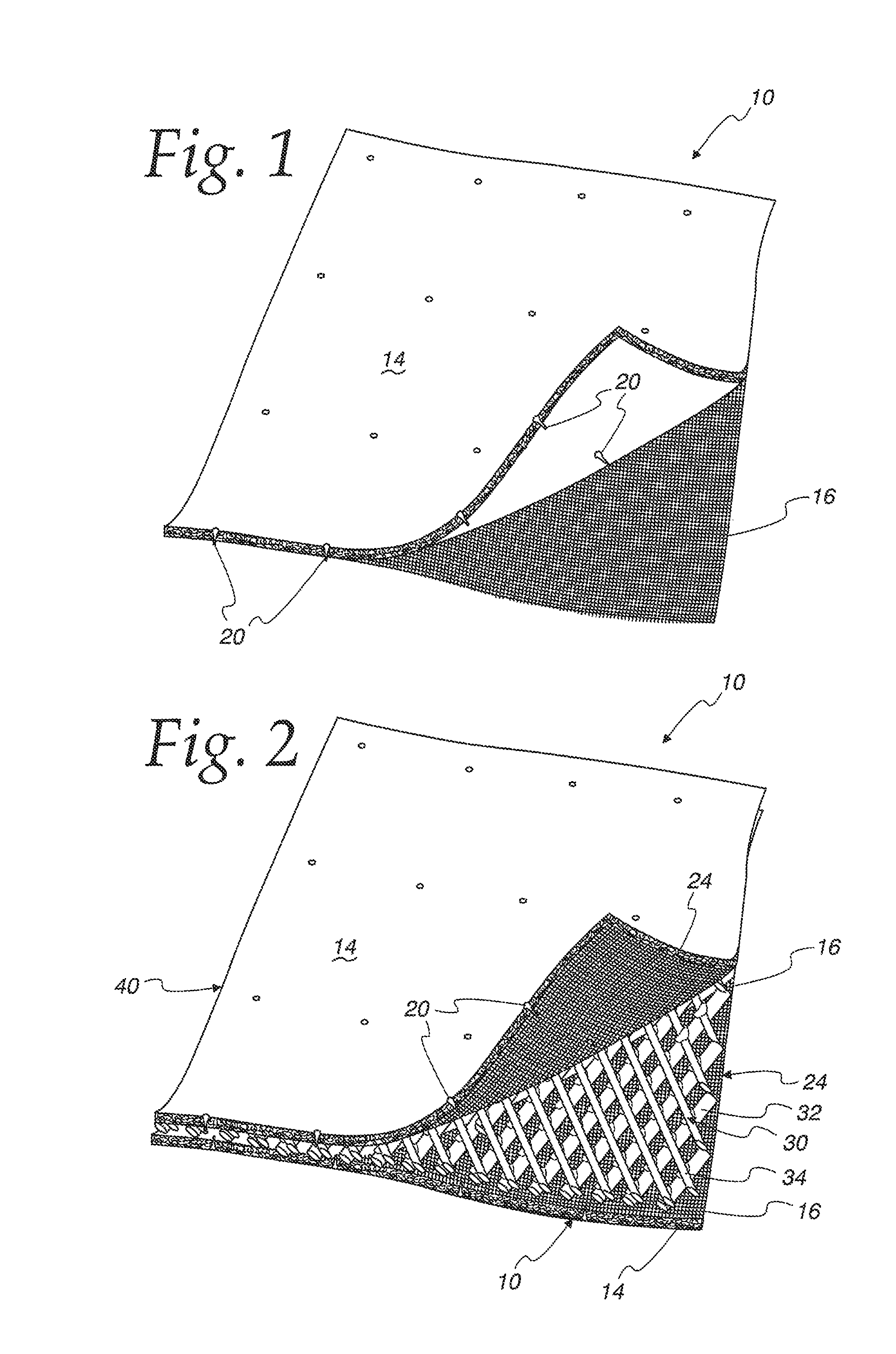Geosynthetic composite for filtration and drainage of fine-grained geomaterials
a technology of geomaterials and composites, applied in the field of geocomposites, can solve the problems of fabrics encountering serious filtration problems, difficult to meet such conflicting requirements, and difficult systems in which a very high content of fine-grained geomaterials is present, and achieve the effect of facilitating liquid draining
- Summary
- Abstract
- Description
- Claims
- Application Information
AI Technical Summary
Benefits of technology
Problems solved by technology
Method used
Image
Examples
Embodiment Construction
[0039]FIG. 1 illustrates a two-layer geotextile filter 10 having a primary filter layer 14 consisting of a nonwoven fabric and a secondary filter layer 16 consisting of a woven fabric. Each layer 14, 16 has opposite faces. As described in further detail below, the two layers 14, 16 are needle-punched together, with one face on the layer 14 directly against one face on the layer 16, to make an integral two-layer geotextile filter 10 wherein fibers 20 of the nonwoven fabric layer 14 project through the woven fabric layer 16 so as to form a fuzzy surface 24 on the side of the woven fabric layer 16 opposite of the nonwoven fabric layer 14 (as illustrated in FIGS. 1 and 2. only a few such fibers 20 are highlighted for clarity of the drawing).
[0040]The nonwoven primary filter layer 14 may be advantageously manufactured from needle-punching staple fibers, with the denier of the fibers and size of the needle selected to provide an opening size distribution that is needed for the target appl...
PUM
| Property | Measurement | Unit |
|---|---|---|
| thickness | aaaaa | aaaaa |
| thickness | aaaaa | aaaaa |
| apparent opening size | aaaaa | aaaaa |
Abstract
Description
Claims
Application Information
 Login to View More
Login to View More - R&D
- Intellectual Property
- Life Sciences
- Materials
- Tech Scout
- Unparalleled Data Quality
- Higher Quality Content
- 60% Fewer Hallucinations
Browse by: Latest US Patents, China's latest patents, Technical Efficacy Thesaurus, Application Domain, Technology Topic, Popular Technical Reports.
© 2025 PatSnap. All rights reserved.Legal|Privacy policy|Modern Slavery Act Transparency Statement|Sitemap|About US| Contact US: help@patsnap.com



